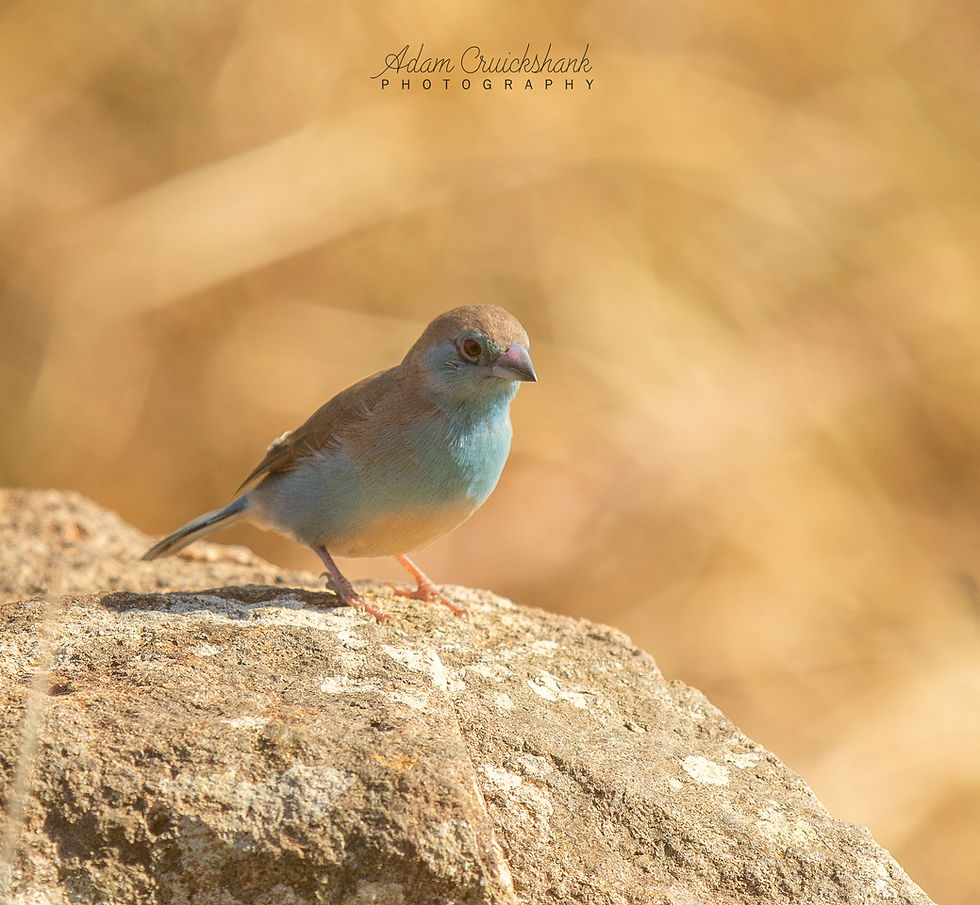African Green Pigeon - ID Guide | Alfie Curling
- alfiecurling
- Aug 28, 2020
- 2 min read
Updated: Oct 1, 2020

Key Identification Features:
Size: Medium 30cm
Bill Shape: Slender fruit-eating
Bill Colour: Red base. White Tip
Legs: Yellow leg Feathers
Red/Orange Feet
Eye Iris Colour: Bluish white
Plumage: Overall Green Appearance
Purple Shoulders
Grey/Green head nape and Breast
Typical Habitat:
Well-wooded regions, Riverine Forests and wooded hillsides, where wild figs are fruiting.
Typical Behavior:
Usually gregarious in small groups. Forages in trees, flapping to keep balance, and often hanging upside down. The somewhat parrotlike green plumage makes for effective camouflage. Remains still when not feeding and when alarmed, Flight is fast and direct.
Similar Species:
No similar species but could be confused with Brown-Headed Parrots if feeding in a dense tree canopy, but easy to distinguish once a clear view has been obtained.
Food: Fruit (mainly figs)
Distribution:

Call:
The call is an explosive, high pitched yet melodious bubbling, descending in pitch.
Below is a video of the call.
Interesting Facts:
Although we only have one species of Green Pigeon in South Africa, the African Green Pigeon, there are 28 different species of Green Pigeons in the World! The African Green Pigeon is one of 5 Green Pigeon species in the Afrotropics.
They may occur and breed in high densities but are prone to regular local movements. Their range includes Angola, Benin, Botswana, Burkina Faso, Burundi, Cameroon, Central African Republic, Chad, Republic of the Congo, Democratic Republic of the Congo, Ivory Coast, Equatorial Guinea, Ethiopia, Gabon, Gambia, Ghana, Guinea, Guinea-Bissau, Kenya, Liberia, Malawi, Mali, Mauritania, Mozambique, Namibia, Niger, Nigeria, Rwanda, São Tomé and Príncipe, Senegal, Sierra Leone, Somalia, South Africa, South Sudan, Swaziland, Tanzania, Togo, Uganda, Zambia, and Zimbabwe.
Latin Name Explained: Treron calvus
Genus: Treron is from the Ancient Greek word trērōn meaning "pigeon" or "dove". This is a typical genus for some old-world fruit-eating Pigeons. The genus Treron was introduced in 1816 by the French ornithologist Louis Jean Pierre Vieillot with the Thick-billed Green Pigeon (Treron curvirostra) as the type species ( a type species in the species name with which the name of a genus or subgenus is considered to be permanently taxonomically associated).
Species: calvus meaning bald, naked, or bare.
So in a nutshell the Latin name translates to a Bald/Naked fruit-eating pigeon. I think a bird of such beauty really pulled the short straw for a Latin Name. (I am not a taxonomist that is my personal opinion)
To book Alfie as a guide:
Please email southafricanbirdid@gmail.com or 0781984159 for more information and prices.
If you, any of your friends or family are interested in joining the South African Bird ID E-mail group, focusing on improving your bird identification skills, please use this link to register: https://mailchi.mp/4488336fdef4/sabird


